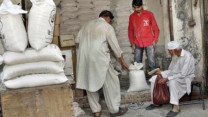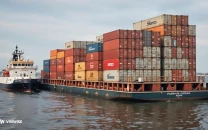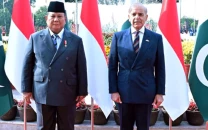A lesson or two from Sub-Saharan Africa
Why some African countries are more successful than us in roping in investment.

PHOTO: FILE
Pakistan received as much FDI as 5% of the country’s GDP back in 2007; but that gradually relapsed to 1.4% in 2010, and to merely 0.4% in 2012. In absolute terms, Pakistan received only $821 million in FDI inflows in 2012, compared to $5.4 billion four years ago. Before pinning this downfall to any widely-recalled set of variables, let us look at Sub Saharan Africa.
For the last five decades, Sub Saharan Africa has been a witness to rampant corruption, armed conflicts, genocides, prolonged civil wars and high political instability, with the war-inflicted death toll reaching the millions. Despite some political stability achieved in the latter part of last decade, it is tough to put a bet on it, given the region’s troubled history. Foreign investors know this fact; still, Sub Saharan Africa has been witnessing impressive growth in FDI.
A simple cross-country analysis might help get my point across: the World Bank’s regional category of Sub-Saharan Africa includes 44 countries. Out of these, at least 25 have an average FDI-to-GDP ratio higher than Pakistan in 2007-11. These countries include the likes of the Democratic Republic of Congo (average FDI-to-GDP ratio: 12.2%), Chad (11.9%), Sierra Leone (11.8%), Madagascar (10.9%), Mozambique (9.5%), Uganda (5.2%), and Central African Republic (5.0%), among others. In contrast, Pakistan’s 2007-11 average FDI-to-GDP ratio stood at a humble 2.3%.
Check out some other interesting statistics: (note that the average FDI to GDP ratio means average between 2007 and 2011) out of the 185 countries in the World Bank’s Doing Business 2013 ranking, Pakistan stands at 107. From our sample of 25, 19 countries are ranked way lower than Pakistan in DB ranking. For instance, Uganda, which reports an average FDI-to-GDP ratio of 5.2%, is ranked at 120; while DR Congo, with average FDI-to-GDP ratio of 12.2%, is ranked at 181.

The World Economic Forum’s Travel and Tourism Competitiveness Index (TTCI) 2013 includes 139 countries, out of which Pakistan is ranked at 125. The remaining bottom 14 spots of TTCI rankings include at least 5 countries from our sample, including Madagascar (127), Mozambique (128), Nigeria (130), Lesotho (135) and Chad (139). Just to remind you, these five countries report a better average FDI-to-GDP ratio than Pakistan.
Pakistan is ranked at 139 Out of 174 countries in Transparency International’s Corruption Perception Index 2012. Again, at least six countries from our sample earned lower scores in the index than Pakistan. At the cost of keeping this article short, I will avoid citing UNDP’s Human Development Index and Fund-for-Peace and Foreign Policy Magazine’s Failed State Index; both of which show somewhat similar results.
Some of the countries in our sample are war torn, have a history of political chaos, are (apparently) more corrupt, offer less economic freedom and you can hardly travel to them for tourist purposes, and you cannot easily do business in them. Why is foreign money still flooding in, then; why such a huge contradiction?
Of course, capital preservation and return on investment are the foremost considerations for any foreign investor. But, apart from that, the more important determinant of foreign investment is the seriousness a regime displays in bringing about economic and socio-political reforms, and in ensuring continuity of policies, rather than just bad law and order at any given time. A foreign investor will make sure the country is serious about reform (like Nigeria under President Jonathan, and Congo under Joseph Kabila), ensuring consistency of good policies (as in Seychelles under Presidents France René and James Michel) or that the country’s leadership enjoys widespread public confidence (as President Pohamba of Namibia). These might not be the only determinants, but are surely the most important ones.
In our case, making policies in isolation, and treating all investors alike is not going to help. What our policymakers can do is to meet the conglomerates and long term investors pumping their money into Africa in order to understand exactly what underpinned their investment decisions, and what would they want from Pakistan if they were to invest here.
A direct approach will surely help in devising a better investment policy.
The writer is an investment analyst in a Karachi-based Development Finance Institution
Published in The Express Tribune, April 29th, 2013.
Like Business on Facebook to stay informed and join in the conversation.



















COMMENTS
Comments are moderated and generally will be posted if they are on-topic and not abusive.
For more information, please see our Comments FAQ